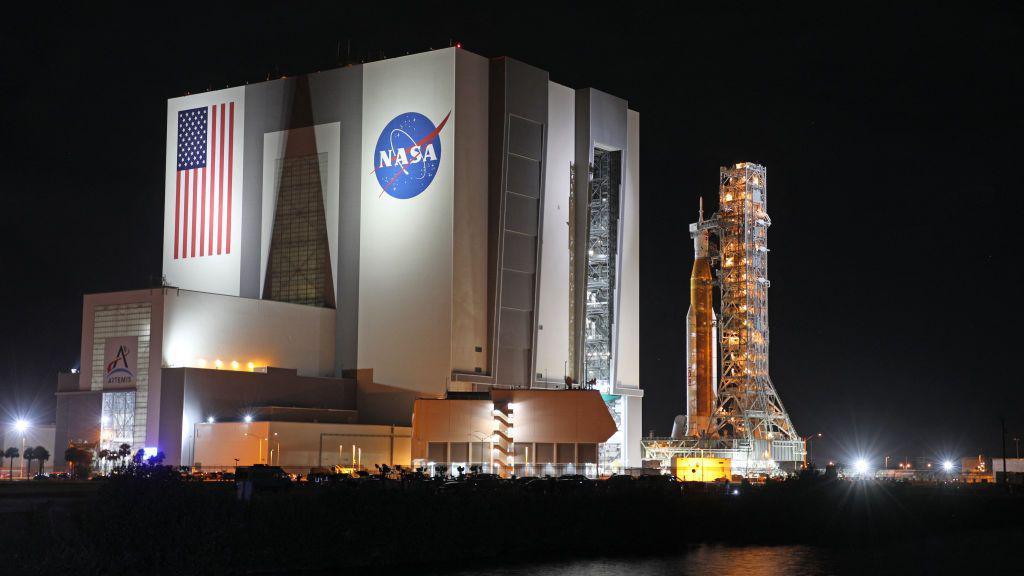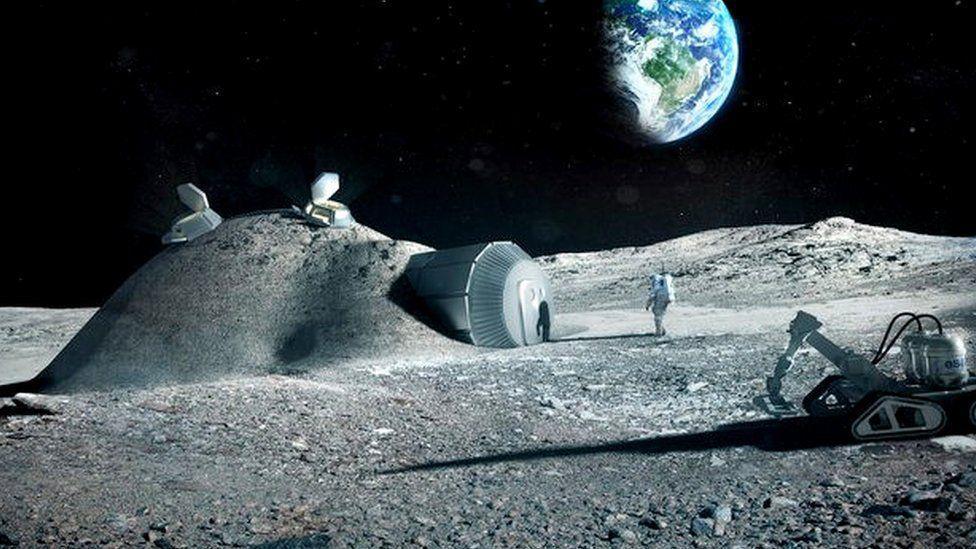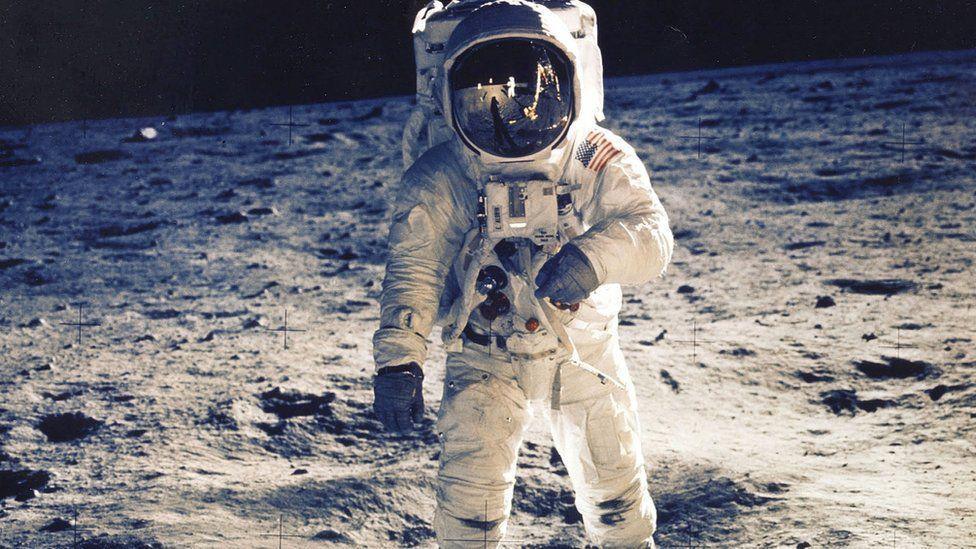Nasa delays Artemis moon mission again

- Published
Nasa has delayed its plans to send astronauts to the Moon... Again.
The US space agency has revealed that its crewed Artemis II and Artemis III missions have both been pushed back again by a year so it can fix a safety issue with its heat shield.
Artemis II had already been rescheduled to launch in September next year, but will now blast off in April 2026, at the earliest.
It will involve a team of four astronauts travelling around the Moon and back again.
Artemis III, which plans to land Nasa astronauts on the Moon's surface for the first time in more than 50 years, will now launch in 2027.
Keep reading to find out more details on Artemis and what other moon missions we could see in the near future.
Are you excited for Nasa's plans? Would you like to go to space one day? Let us know in the comments below!
More Artemis news
Designer space suits for Moon mission revealed
- Published17 October 2024
Nasa picks possible landing sites for Moon mission
- Published4 November 2024
Artemis Moon mission: Meet Nasa's new crew
- Published4 April 2023
What was Artemis I?
WATCH: Nasa Artemis I rocket blasts off in historic launch (November 2022)
Artemis I blasted off from Nasa's Kennedy Space Center in the US state of Florida on 16 November 2022, in what was a historic moment for Nasa.
The first part of the Artemis mission saw a special spacecraft called Orion fly around the moon and then back to earth.
The test flight saw the capsule travel 270,000 miles beyond the Earth - the furthest any spacecraft designed to carry humans has ever been.
There weren't any humans on board the flight, but there were three dummies strapped in the capsule, which were wired with vibration sensors and radiation monitors to see how humans would cope in the conditions.
After a fiery re-entry into Earth's atmosphere, it splashed into the Pacific Ocean after nearly 26 days in space.
What is Artemis II?
WATCH: Nasa's Artemis II crew answer questions from school children
Artemis II is the second scheduled mission of Nasa's Artemis program, and the first one that will have people on board.
It is now scheduled to launch in April 2026 and will see the spacecraft complete a slightly different flight path than that of Artemis I, taking humans further than they've ever been before in space.
The four-person crew will be launched into space by the SLS rocket, before flying the Orion module just over 5500 miles beyond the Moon, completing a lunar flyby and returning back to Earth.
The mission will take between eight to ten days to complete and will collect important flight test data and see how ready the Artemis program is to send people to the Moon's surface.
What is Artemis III?
WATCH: What are conditions like on the Moon?
Artemis 3 is set to be the first crewed Moon landing mission in more than fifty years and is now due to launch in 2027.
It's also scheduled to see the first person of colour and first woman astronaut head to the Moon.
It's expected that up to four astronauts will take off and remain in space for 30 days.
Nasa then plans to take two of those people and land them on the Moon's South Pole, a region previously unvisited by humans.
The two astronauts are expected to spend around a week exploring the surface and perform a variety of scientific studies, including sampling its water ice.
The remaining astronauts will stay on board Orion.
With the help of a successful Artemis mission, Nasa hopes to learn and test the skills required for longer space journeys - such as those to Mars.
If all goes to plan, the Space Agency is looking at sending astronauts to the Red Planet as early as the 2030s.
Other future moon missions

In 2017 the European Space Agency shared designs of how they imagine lunar homes of the future might look like
In a later mission, Nasa says it will launch and deliver a rover - made by Japan - to the Moon.
It will act as a mobile laboratory and as a place where astronauts can live and work for extended periods of time.
Nasa added that there are plans for two Japanese astronauts to work on future missions with them.
Other countries are also planning on heading to the moon.
China has announced that wants to land a crewed mission on the lunar surface by 2030.
It recently unveiled the next spacesuit their astronauts could be wearing to help them walk on the Moon.
A number of space agencies have also said they are interested in building a long-term human base on the moon in the future.
When was the last time humans went to the Moon?

Buzz Aldrin was the second person to set foot on the Moon
The last time a person landed on the Moon was during the Apollo 17 mission in 1972.
The first ever landing was a few years earlier on July 20 1969, when Neil Armstrong, one of the astronauts in Apollo 11, became the first human to walk on the surface of the Moon.
It was one of the most important moments in human history.
In total, 24 astronauts have travelled from Earth to the Moon and 12 of them have walked on the lunar surface - all of whom were part of Nasa's Apollo missions.
